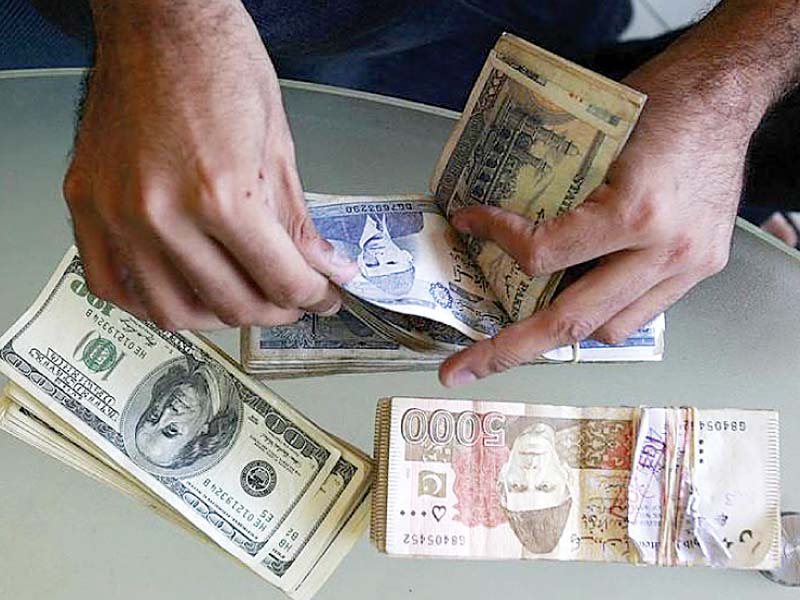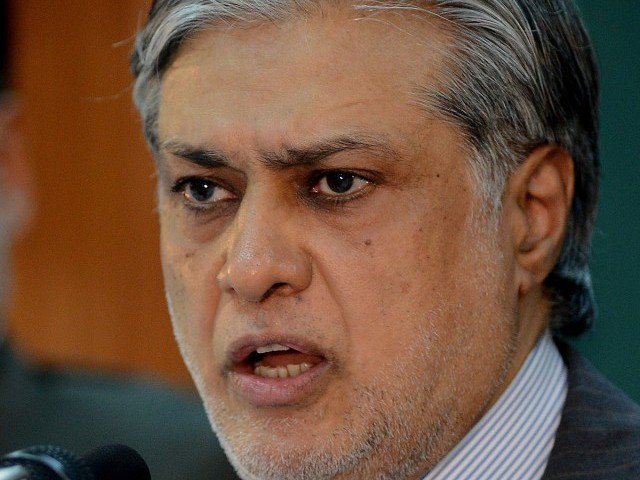
The Monetary and Fiscal Policies Coordination Board took these decisions despite the fact that similar measures - introduction of cash margin requirements and imposition of regulatory duties - failed to yield desired results. The Board is responsible to take decisions on the coordination of fiscal, monetary and exchange rate policies.
There was a general agreement in the ranks that rupee depreciation would actually harm exports, according to officials privy to these discussions. The rupee-dollar parity stood at Rs105.38 to a dollar as of Friday. The International Monetary Fund has termed Pakistan’s rupee overvalued by up to 20%.
Three out of seven members did not participate in the meeting. Minister for Planning and Development Ahsan Iqbal, Commerce Minister Khurram Dastgir Khan and private-sector member Dr Ishrat Husain did not attend the meeting. Secretary Commerce Younus Dagha, as an alternate member, represented the Commerce Ministry.
There was only one economist, Dr Asad Zaman, among those who attended the Board meeting.
The meeting was held in the wake of recent developments on the external sector front particularly the SBP’s decision to depreciate the rupee against the US dollar by 3.1% on July 5 to Rs108.25. However, Finance Minister intervened and got the decision reversed within 24 hours.
There was a strong view in the committee that the exchange rate depreciation would not be good for the economy, according to a member of the Board. The Board was of the view that during next two years the Balance of Payments position was very positive and recent pressure on the external sector would ease out.
The Finance Minister remarked that sharp deterioration of Rupee-US exchange rate in the interbank market led to speculation and anxiety in the foreign exchange market. However, due to prompt action by the SBP stabilisation was achieved and it averted the high risk of speculation, a Finance Ministry handout quoted Dar as saying.
The meeting was informed that the current account deficit widened to $10.64 billion due to fall in exports and remittances during July-May 2017. “The decline in exports is more due to exogenous factors as the decline in exports was also witnessed in other regional countries,” said the Finance Ministry.
SBP Governor Tariq Bajwa informed the Board that “policy interventions need to be taken to address widening current account challenge, said the Finance Ministry.
Reversing tariff liberalisation?
The Finance Minister decided to establish an inter-ministerial committee comprising members from Ministry of Finance, Commerce, SBP and PIDE on tariff rationalisation so that tariff policy could be aligned with trade policy leading to improvement in balance of trade, according the Finance Ministry handout.
The Committee will submit its recommendations within four weeks.
The sources said that the committee will review the possibility of increasing the tariff rates as a tool to discourage imports. The Board was of the view that imposition of regulatory duties and introduction of cash margin requirements on import of goods were not yielding the desired results.
In February this year, the SBP introduced 100% cash margin requirements on non-essential consumer goods imports to contain the widening current account deficit. However, despite that the current account deficit widened to $10.6 billion or 3.8% of the GDP during July-May period of last fiscal year.
The IMF had objected to introduction of cash margin requirements, which were against the Fund’s polices that treat it as “exchange restriction and multiple currency practice”.
Finance Minister also claimed in the Board meeting that “foreign exchange reserves are at a comfortable level” - a view that is contrary to the IMF’s assessment. In its latest report, the IMF has said that Pakistan’s official foreign currency reserves have fallen to “below comfortable level” and sufficient to finance slightly over 3 months imports bill.
Published in The Express Tribune, July 16th, 2017.
Like Business on Facebook, follow @TribuneBiz on Twitter to stay informed and join in the conversation.










































COMMENTS
Comments are moderated and generally will be posted if they are on-topic and not abusive.
For more information, please see our Comments FAQ